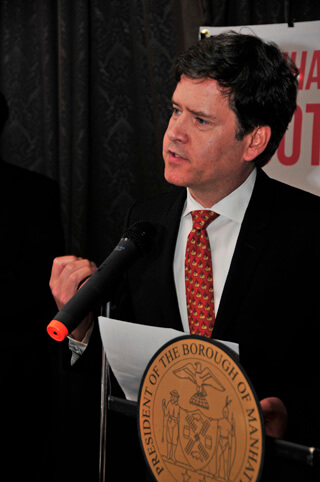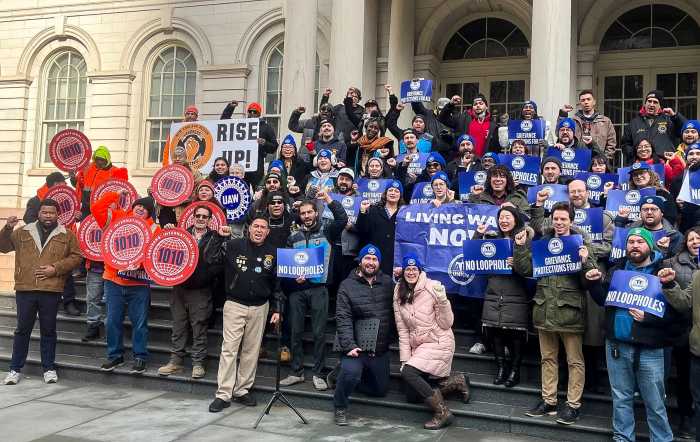The San Francisco-based Ninth Circuit Court of Appeals has affirmed a district court ruling that a school district in Dallas, Oregon, did not violate the legal rights of parents and students who objected to its policy of allowing transgender students to use bathroom and locker room facilities consistent with their gender identity.
The February 12 decision upholding District Judge Marco A. Hernandez’s ruling came from a unanimous three-judge panel comprised of A. Wallace Tashima, who was appointed by Bill Clinton and wrote the court’s opinion, Susan P. Graber, also appointed by Clinton, and John B. Owens, appointed by Barack Obama.
The school district adopted its policy in response to a request from a transgender student, cited in the court’s opinion as Student A, who was identified as female at birth but announced in September 2015 that he identifies as a boy and wished to use the boys’ bathroom and locker room. This request came in advance of the Obama administration sending out its letter to school districts nationwide advising that trans students have a legal right to such access, a directive the Trump administration disavowed shortly after taking office.
The district adopted a policy it called the “Student Safety Plan” allowing trans students to “use any of the bathrooms in the building to which he identifies sexually.” School staff were to be trained regarding Title IX, the federal statute requiring schools receiving federal funding to afford equal educational opportunity for students regardless of their sex. The plan also provided that the gym teacher would be the first to enter the locker room and be present at all times when students were using it, and that Student A’s locker would be in direct line of sight of the coach’s office, so the coach would see if anybody interfered with him.
The plaintiffs in this lawsuit claimed that Student A’s presence in the locker room caused cisgender boys “embarrassment, humiliation, anxiety, intimidation, fear, apprehension, and stress,” and that the privacy stalls in the bathrooms were insufficient because they had gaps through which “partially unclothed bodies” could “inadvertently” be seen. A single-user bathroom, they also alleged, was “often inconvenient or considered inferior because it lacked a shower.”
In other words, the plaintiffs argued that the trans student should have to use the inconvenient and inferior facility rather than them, due to their “stress” and “fear” around the possibility of encountering Student A while using the locker room and a public bathroom.
According to Judge Tashima’s opinion, the parents who joined the suit as plaintiffs charged that the school policy interfered with their “preferred moral and/ or religious teaching of their children concerning modesty and nudity.” Meanwhile, “several cisgender girls suffered from stress and anxiety as a result of their fear that a transgender girl student who remains biologically male would be allowed to use the girls’ locker room and bathroom” — though it’s unclear if the school has a any trans girls.
The lawsuit alleged violations of Title IX, the federal Religious Freedom Restoration Act, the First and 14th Amendments of the Constitution, and the Oregon public accommodations law. The federal constitutional violations, the suit asserted, included denying cisgender students of their privacy rights and their parents of their liberty interest in raising their children.
Tashima batted down the privacy argument noting that the school policy provides “alternative options and privacy protections” to students who did not wish to be exposed to Student A in the shared facilities — even if the alternative options “admittedly appear inferior and less convenient.”
Nor does the policy create a “hostile environment” for cisgender students, in violation of Title IX, with Judge Hernandez having found that it does not discriminate against any student because of his or her sex, since it applies across the board to all students. Hernandez also noted that decisions by other courts had all agreed that “the presence of transgender people in an intimate setting does not, by itself, create a sexually harassing environment that is severe or pervasive.”
On the question of the parents’ rights, the district court had pointed out that the Supreme Court has rejected claims by parents that they were entitled to control the school curriculum or policies in order to “protect” their children from influences feared by the parents.
The court also rejected the parents’ free exercise of religion claim that they have a right to shield their children from exposure to views that the parents consider immoral on religious grounds. Tashima affirmed Hernandez’s reliance on Supreme Court precedents that free exercise claims do not provide any exemption from a religiously neutral and generally applicable policy that does not specifically target religious beliefs.
The appellate panel agreed that the district’s policy was “carefully-crafted… to avoid discrimination and ensure the safety and well-being of transgender students,” and that it did not violate Title IX or any constitutional rights of the parents or the cisgender students. Hernandez’s decision to dismiss the suit was upheld.
This ruling is consistent with those of several other courts, including one from the Philadelphia-based Third Circuit Court of Appeals that the Supreme Court declined to review last year. Still, several otherwise unrelated cases on which the Supreme Court is currently considering review do raise the question whether to re-evaluate its long-standing precedent that there is no constitutional free exercise exemption from complying with religiously neutral, generally applicable government policies. Several high court justices have elsewhere signaled their openness to taking that step. If the Supreme Court grants review in any of those cases — including this one if the plaintiffs seek review — an important brick in the wall of separation between church and state could be breached.
A total of nine amicus briefs were filed in this case — none of them supporting the plaintiffs’ position. While all the major LGBTQ rights organizations as well as other civil rights groups and medical and educational professional groups weighed in, the usual suspects on the bigoted right were AWOL. The American Civil Liberties Union was permitted to argue on behalf of the rights of the transgender students in the district.



































